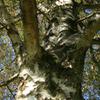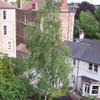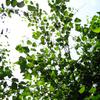Great choice! We're adding your items to the basket and working out what else you might need to plant it.
Silver Birch Betula pendula
Example photos only. Size, stem height and habit may vary.
Please contact us for photos of current stock.
Select plant type
Quantity
British Grown – The British Grown logo denotes plants and trees that have been both propagated and grown in the UK. Read more
Product Description
BETULA PENDULA - Silver Birch
Characteristics
This large, native, graceful tree is featured in Coleridge’s poem thus:
“I pass forth into light – I find myself
Beneath a weeping birch (most beautiful
Of forest trees, the Lady of the Woods)”.
Silver birch is fast growing and can reach 20m (65ft) or more on maturity. The branches are notable for their pendulous ends, which give it a gently weeping appearance. The bark is white often with black diamond shaped markings. (If you are looking for smooth, gleaming white bark, a better option is the Himalayan birch).
The leaves of Betula pendula are relatively small, 3-6cm, and turn yellow in autumn. The foliage is not too dense and the delicate branching makes a fine tracery that can provide a light screen in winter as well as when the tree is in leaf.
Where to grow
Silver birch grows well on all types of soil, even surviving in poor dry soils. It can withstand air pollution and thrives in cities. As a “pioneer” species it quickly colonises recently felled or cleared ground. Birch would have been one of the first trees to naturalise here after the last ice age.
Did you know?
There seems to be no end to the uses that birch can be put to. In his 1886 essay “A taste of Maine Birch”, John Burroughs lists the following (although he may have been referring to the paper bark birch – Betula papyrifera):
“The whole equipment of the camp lies folded in it, and comes forth at the beck of the woodman's axe; tent, waterproof roof, boat, camp utensils, buckets, cups, plates, spoons, napkins, table cloths, paper for letters or your journal, torches, candles, kindling-wood, and fuel. The canoe-birch yields you its vestments with the utmost liberality. Ask for its coat, and it gives you its waistcoat also. Its bark seems wrapped about it layer upon layer, and comes off with great ease. We saw many rude structures and cabins shingled and sided with it, and haystacks capped with it. Near a maple-sugar camp there was a large pile of birch-bark sap-buckets,—each bucket made of a piece of bark about a yard square, folded up as the tinman folds up a sheet of tin to make a square vessel, the corners bent around against the sides and held by a wooden pin. When, one day, we were overtaken by a shower in traveling through the woods, our guide quickly stripped large sheets of the bark from a near tree, and we had each a perfect umbrella as by magic.”
Features
-
Mature Height
- Large - 15-20 metres
-
Spread
- 15-20 metres
-
Shape / Habit
- Open
- Spreading
-
Growth Rate
- Very Fast
-
Soil Type
- All soil types
-
Sun Levels
- Full sun
-
Difficulty / Hard to Grow
- Easy
-
Evergreen / Deciduous
- Deciduous
-
Autumn Colour
- Yellow
-
Leaf Colour
- Green
-
Foliage
- Fine/Light leaf
- Early to Leaf
- Small leaves
-
Uses
- Screening
- Parkland Tree
- Garden Tree
- City/Urban Sites
- Encourages wildlife
- Good Firewood
- Timber producing
-
Stem / Bark
- White
-
Peeling Bark
- Yes
-
Native / Naturalised
- Native
-
Season
- Autumn
- Winter
- Spring
- Summer
-
Other Features
- Good for Windy sites
- Good at altitude
Aftercare
Pruning Betula pendula
Betula pendula has no special pruning needs. Young trees can be left feathered or stems cleared to create a standard. It is also possible to create multi-stemmed birches by are also possible . or multi-stemmed tree, and it will then need little to no maintenance. Hard pruning is not advisable as it spoils the naturally graceful shape of the tree.
To display the bark synonymous with many Birches, remove low stems from the trunk when they are young. This will keep branch scars small.
When should I prune? Light prune during the autumn, through to mid-winter.
For the continued healthy growth of your trees, shrubs or hedging it is vital that you follow the advice below.
Watering
The main reason that plants die within 12 months of having been planted is lack of water. It is essential throughout the spring and summer, to give a heavy enough watering to enable the water to penetrate right down to the deepest root level of the tree. In hot dry spells give the equivalent of 2 bucketfuls every three days.
Weed Control
One of the most common causes of lack of water is competition from grass. When trees are first establishing, the grass roots would be at the same level as the tree roots and are far more efficient at taking up water and thus choke the tree. It is vital that for at least 3 years after planting your tree or hedge has a circle or strip one metre wide completely free of grass.
- Mulch mats are an effective way to stop grass and weeds, although they will require a careful eye to make sure they continue to work. After clearing the ground around the tree, firmly fit the mat by tucking the edges into the soil and put a thick layer of bark mulch on top of this. Be careful not to allow the woodchip to touch the stem as it can cause rot.
- Weed killer is very effective, however it is harmful to the environment. Organic weed killers usually do not kill roots. Weed killer needs to be applied each year for the first 3 years, preferably when the tree is dormant, or just once before applying a mulch mat.
- Mowing or strimming is NOT an answer to the problem. Each time you mow, the grass will grow back more vigorously and strimming invariably leads to lacerated trunks.
Staking
If trees are not correctly secured they will rock in the planting pit. Roots not firmly in contact with the soil are unable to take up moisture and nutrients, resulting in die back or death of the tree. Check, particularly after windy weather, that stakes are still solidly in the ground keeping the base of the trunk firm. The purpose of the stakes is to anchor the roots. Flexing in the wind, higher up the trunk, is not necessarily a problem if the roots are firm.
Bellow is list of the correct system to use to secure your trees.
- 40/60, 60/80, 80/100 whips - Unless rabbit/deer problem no need to stake.
- 100/125, 125/150 1.2m Cane and Easi tie.
- 150/175 1.2m square stake and a buckle tie and spacer.
- 175/250, 6/8, 8/10 15L 1.65 Tree stake and a buckle tie and spacer.
- All larger trees. 2 x 1.65 Tree stake and cross rail with 38mm cushion spacer and 1m of 38mm strapping.
Ties
Always use our recommended tree ties or strapping. These are designed and manufactured with the correct amount of give to hold the tree firm without strangling it. They should be checked at the end of each growing season for adjustment as the trunk thickens. Non proprietary materials such as baler twine will cut into the bark and should not be used.
Protection from Animal Damage
Rabbits, deer, sheep, cattle and horses can all potentially damage trees. Ask us for advice on the most appropriate guards for your trees or hedge. Squirrels are also a terrible pest when trees get to about 20ft tall but there is no protection available.
Are the delivery costs the same no matter how many plants I order?
Yes the delivery costs stay the same no matter how many plants you have on your order. They are worked out based on your distance from our nursery and can be found here.













